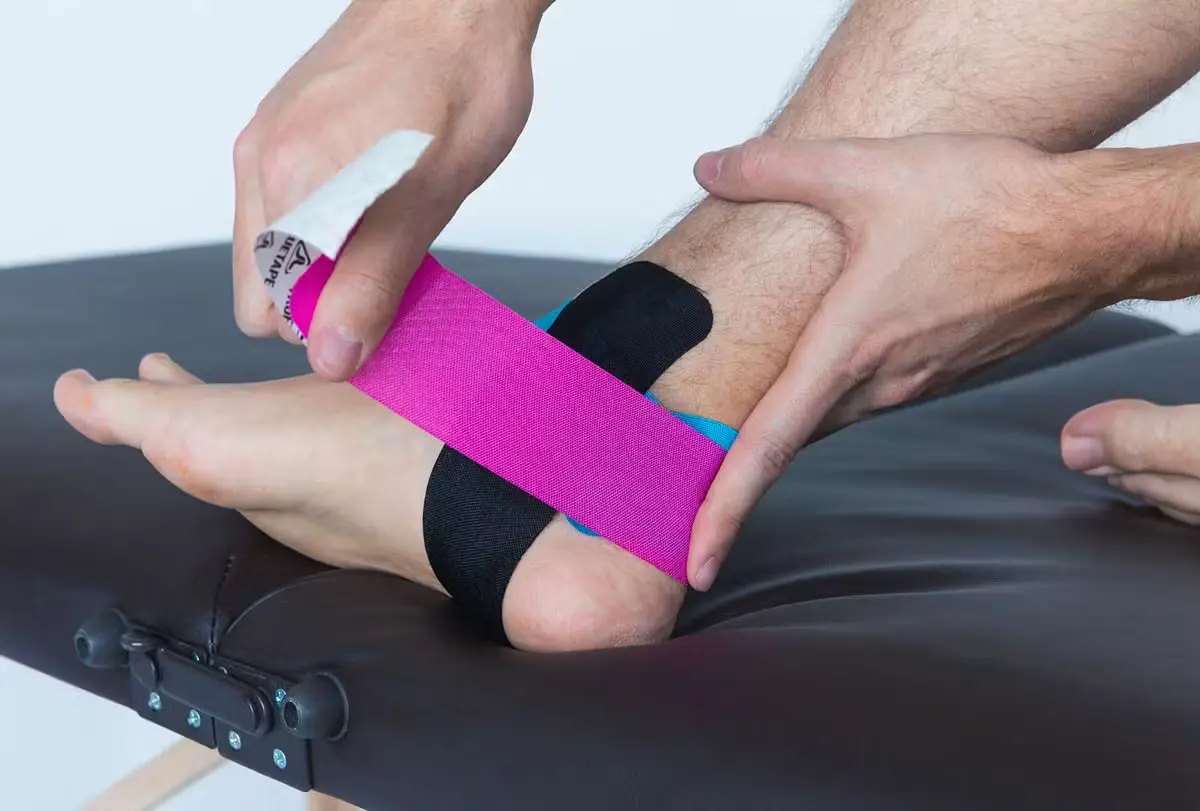Anyone engaged in sports, fitness, or consistent physical activity has to be expert in ankle strapping. Whether your goal is to prevent an injury or looking to prevent one, knowing how to strap an ankle correctly will help you immensely. This article offers thorough instructions, advice, and best practices to guarantee you can comfortably and successfully strap an ankle.
Why strap an ankle?
Support and stability from ankle straps help to prevent sprains and other injuries. It’s especially important for athletes and those engaging in activities that put stress on the ankles. Proper strapping can:
- Reduce pain and swelling
- Provide support and stability
- Prevent further injury
- Support the healing process
Required materials
Get the instruments you will need before you start. Having everything at hand will help to guarantee speedier and more seamless operation.
- Athletic tape (preferably rigid tape)
- Pre-wrap (optional, for sensitive skin)
- Scissors
- Adhesive spray (optional, for better tape adhesion)
Step-by-step guide to strapping an ankle
1. Prepare the ankle
Make sure the ankle is first dry and clean. If the person has sensitive skin, a pre-wrap will help to guard it from tape-induced irritation.
- Clean and dry the ankle
- Use pre-wrap if needed
2. Position the foot
Have the person sit down and place their foot at a 90-degree angle. This posture lets the ankle stay in its normal position, so the tape offers sufficient support.
- Sit down and position the foot at a 90-degree angle.
3. Apply anchor strips
Start by running lower leg and foot anchor strips around. All later taping work will be based on these strips.
- Wrap anchor strips around the lower leg (just above the ankle).
- Apply anchor strips around the foot (near the arch).
4. Create stirrup strips
Laterally, stirrup strips help to stabilise the ankle. They should run from one anchor strip to the other across under the heel.
- Apply a strip from the inside of the ankle, under the heel, to the outside of the ankle.
- Repeat with another strip slightly forward of the first.
5. Apply figure-eight strips
Extra support and help for maintaining the stirrup strips in place come from figure-eight strips. Use them in a crisscross pattern.
- Starting at the anchor strip on the lower leg.
- Cross over the front of the ankle, wrap under the foot, and return to the starting point.
6. Apply heel locks
By tightly keeping the heel in place, heel locks help to increase ankle stability. These especially help to prevent eversion and inversion sprains.
- Start towards the front of the ankle.
- Wrap around the back of the heel, crossing under the foot, and return to the front.
- Repeat on the other side.
7. Close the strapping
Finish by closing off the tape job with additional anchor strips. These will cover the ends of the stirrups, figure-eights, and heel locks, securing the entire strapping.
- Apply additional anchor strips over the initial ones.
- Make sure every loose end is covered.
Tips for effective ankle strapping
- Avoid Wrinkles: Wrinkles in the tape can cause discomfort and blisters. Smooth out each strip as you apply it.
- Check Circulation: After strapping, check circulation to make sure the tape isn’t overly tight. The toes need not to feel numb; their colour should remain normal.
- Use Adhesive Spray: If the tape doesn’t adhere well, consider using an adhesive spray to enhance the stickiness.
When to seek professional help
Although strapping can be done at home, some circumstances call for professional help. See a doctor or physiotherapist if:
- You don know the right approach.
- The damage is either severe or not improving.
- There’s significant swelling or bruising.
Frequently asked questions
1. For what period should I leave the tape on?
Leave the tape on for no longer than forty-eight hours. Long use could aggravate skin conditions and lower effectiveness.
2. Can I workout with a strapped ankle?
Working with a strapped ankle is possible; but, you must apply the tape correctly to offer enough support and stop more damage.
3. Is strapping suitable for all ankle injuries?
Strapping helps with minor to moderate injuries. See a doctor to obtain appropriate treatment for more major injuries.
Conclusion
Ankle strapping can help to prevent and control damage efficiently. Following the guidelines in this article will enable Australians to properly strap an ankle, ensuring proper support and stability. Safety and health of the individual should always come first. Stay active, stay safe!






